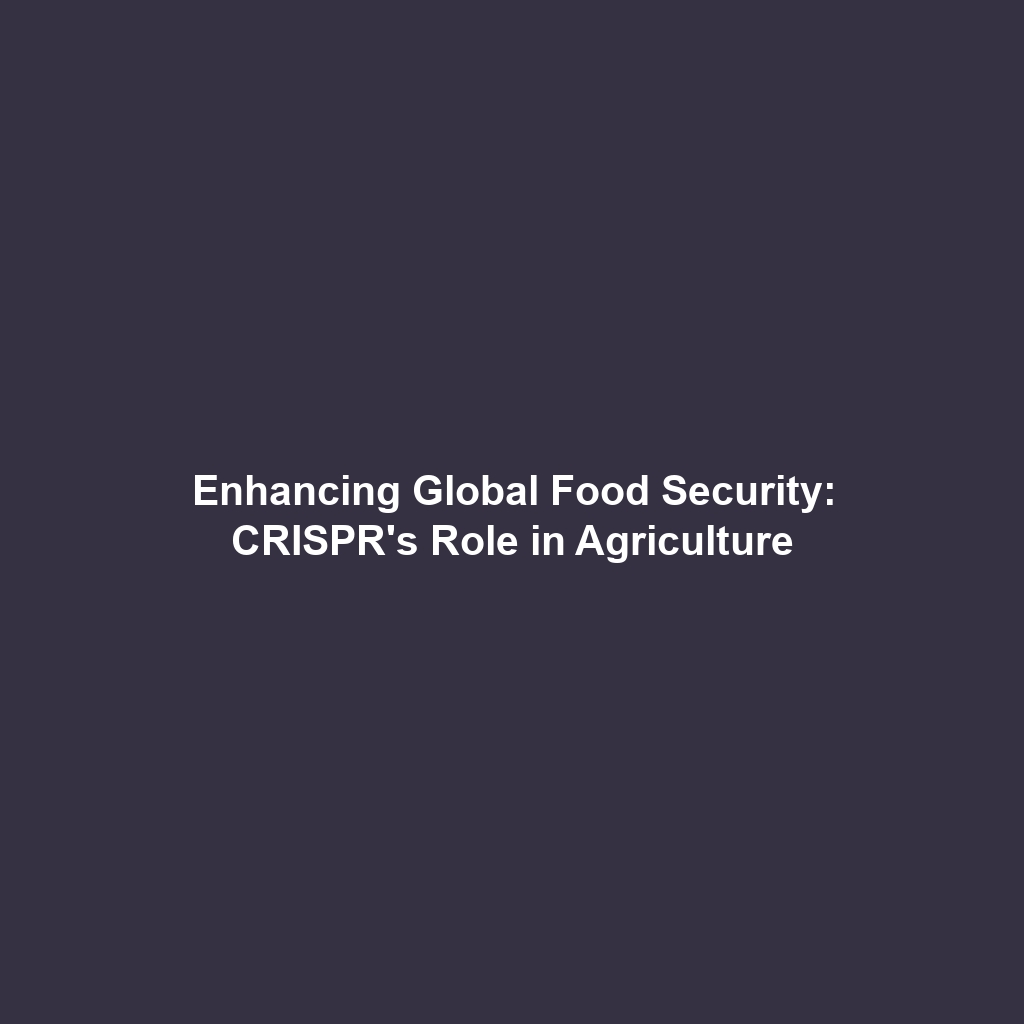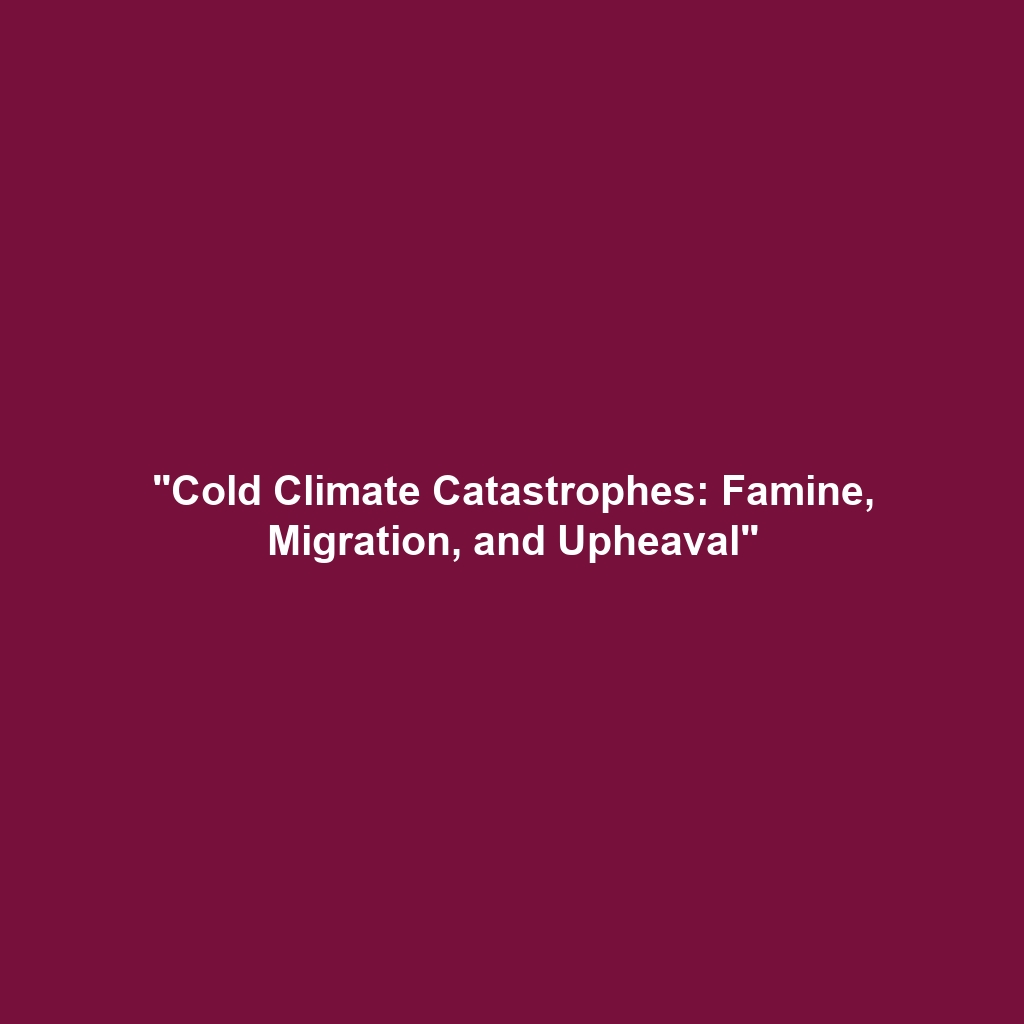CRISPR and Food Supply: Addressing Global Food Security Issues
Introduction: The emergence of CRISPR gene editing has revolutionized modern agriculture, offering solutions to pressing global food security issues. As the world faces challenges such as population growth, climate change, and declining arable land, innovative technologies like CRISPR stand out for their potential in enhancing crop resilience and productivity. This article delves into CRISPR’s significant contributions to food supply and its role within the broader context of CRISPR gene editing, highlighting its transformative potential in ensuring food security worldwide.
Key Concepts
CRISPR, which stands for Clustered Regularly Interspaced Short Palindromic Repeats, is a groundbreaking technology that allows scientists to edit genes with high precision. Within the realm of food supply, CRISPR gene editing is pivotal for:
- Crop Improvement: Enhancing traits such as disease resistance, drought tolerance, and nutritional quality.
- Real-Time Adaptation: Allowing breeding programs to respond swiftly to climate variability and pest pressures.
- Food Quality Enhancement: Improving flavors and shelf-life through targeted modifications.
Applications and Real-World Uses
The applications of CRISPR in food supply are both innovative and practical, including:
- How CRISPR is Used in Agriculture: By genetically modifying crops like rice to increase yield and nutritional value, CRISPR aids in addressing malnutrition and food scarcity.
- CRISPR Applications in Livestock: Enhancing disease resistance in livestock breeds, thus reducing the need for antibiotics and improving animal welfare.
- Environmental Sustainability: Developing crops that require fewer resources, such as water and fertilizers, thereby minimizing environmental impact.
Current Challenges
Despite the promise of CRISPR in food supply, several challenges remain:
- Regulatory Hurdles: Many countries lack clear guidelines for the approval of CRISPR-modified organisms, complicating their market entry.
- Public Perception: Misunderstandings about genetic modification can lead to public resistance against CRISPR-edited foods.
- Technical Limitations: There remains a need for improvement in off-target editing and ensuring the stability of edits over generations.
Future Research and Innovations
Looking ahead, research in CRISPR and food supply is poised for significant advancements:
- Next-Gen Technologies: Breakthroughs in gene-editing techniques may enhance specificity and reduce unintended effects.
- Integration with Data Science: Employing AI to predict crop responses and optimize breeding strategies tailored for specific environments.
- Global Collaborations: Increased partnerships among researchers, governments, and agricultural industries to bridge gaps in food security efficiently.
Conclusion
In conclusion, CRISPR gene editing is transforming the food supply landscape and addressing global food security issues with remarkable efficacy. As researchers tackle existing challenges and explore innovative solutions, the future of CRISPR technology appears promising. Continued investment and education on this technology are essential as we strive for a food-secure world. For more information on gene editing and its applications in agriculture, read more here.

